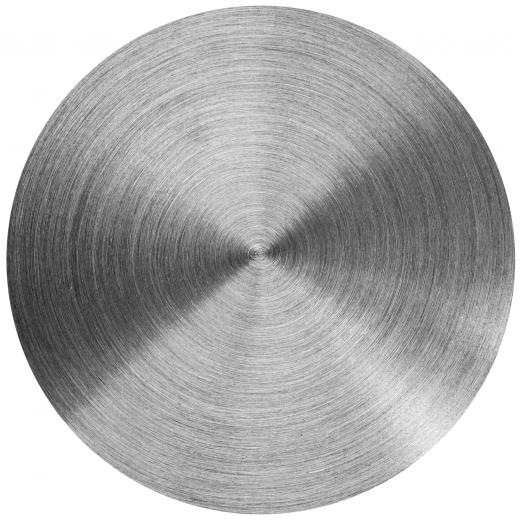Hardened steel is a type of carbon steel used for making tools and heavy machine parts. This material consists of steel that has been specially treated to improve its hardness and strength. Compared to standard steel, the hardened type offers greater wear resistance and durability, making it well-suited to heavy-duty applications.
To make hardened steel, manufacturers heat carbon steel to high temperatures, then subject it to a process called quenching. During quenching, the steel is rapidly cooled in a solution of brine or water. After quenching, the steel is very hard, yet also extremely brittle. To reduce brittleness while maintaining the added hardness of the steel, manufacturers then temper the metal by reheating it once again and letting it cool naturally. By combining quenching and tempering, steel makers can create products that are harder than standard carbon steel, yet durable enough to withstand cracking or damage caused by sharp impacts.

The term hardened steel may also refer to metal that has been case hardened. This type of metal goes through a slightly different quenching and tempering process, which gives it a tough and wear-resistant exterior while eliminating all brittleness within the core of the steel. Cased steel is used to make objects like handguns, where exterior wear resistance must be coupled with maximum strength throughout the material.
Hardened steel is used to make metal objects that are subject to high levels of force or abuse. For example, most automotive parts are made from this material, particularly those used for trucking. Hand tools and drill bits often consist of this type of steel, as do many knives. This type of steel is not used for objects made in a metalworking lathe, as these machines require steel that is softer and easier to work with.
One of the primary advantages to hardened steel is its added resistance against wear and abrasion. This material can withstand frequent abuse and heavy loads without damage or failure. It is also better able to resist rust and corrosion than standard steel products.
Despite its many advantages, hardened steel may not be appropriate for all types of applications. Compared to standard carbon steel, this material is fairly brittle, even after going through the tempering process. This means it is unable to withstand damage from sharp impacts. Quenching and tempering also lowers the melting point of steel, which could pose problems in terms of fire safety. This could also prevent hardened steel from being used in some projects where it will be subject to high temperatures, such as near engines or other large machines.
